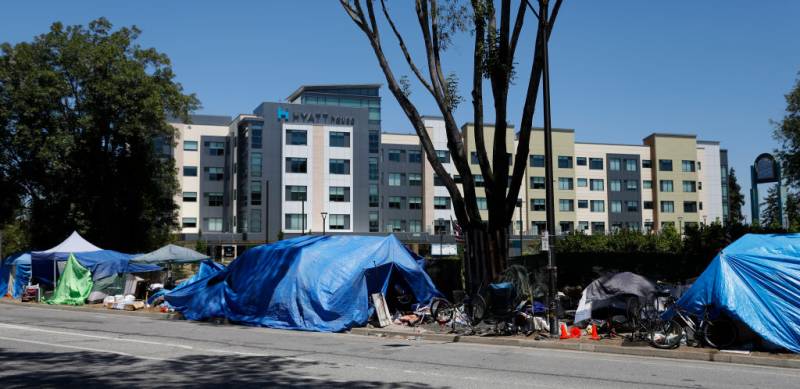“We live in a capitalist system that is based on markets,” said Russell Hancock, chief executive of the San José-based think tank. “There’s rules to the game; the rules are fair. In Silicon Valley, we have some of the world’s biggest winners.”
Hancock added that the report highlights the need for more investments in education and “equipping people for success.”
The institute defines Silicon Valley as Santa Clara and San Mateo counties, as well as parts of Santa Cruz and southern Alameda counties. The think tank also includes San Francisco in some of its metrics. The report focused solely on data from Santa Clara and San Mateo counties for its wealth analyses.
Wealth inequality in Silicon Valley is more pronounced than in the U.S. overall, or globally, with the top 1% of households holding 48 times more of the total wealth than the bottom 50%, according to the report. That compares to 23 times nationally and globally, the report said.
Ultra rich
The report estimates Silicon Valley’s aggregate household wealth is nearly $1.1 trillion, when it counts ultra-high-net-worth individuals.
The report marks the first time the think tank published wealth estimates that include data on these ultra-high-net-worth individuals, whom the institute defined as those with net investable assets of $30 million or more.
Such assets are those that are held in cash, or can easily and quickly be converted into cash, including checking accounts, certificates of deposit and retirement accounts. The group did not count houses, cars or other nonliquid financial holdings as investable assets.
Santa Clara and San Mateo counties had 163,000 millionaire households in 2022, which the report defined as households that had more than $1 million in investable assets. That translates to less than 1% of the region’s population holding about 36% of its wealth.
And an estimated 8,300 households held more than $10 million in investable assets, according to the report.
Conversely, there were about 220,000 Silicon Valley households with fewer than $5,000 in total assets.
About 23% of Silicon Valley residents lived below the poverty threshold in 2021, a three-percentage-point increase from 2019. Two percent of Silicon Valley households, or about 22,000 households, did not hold bank accounts.
The report also noted that while income inequality was lessening statewide, down 1%, as well as nationally, down 3%, income inequality rose in Silicon Valley by 5% in 2021. Generally, the pace of income inequality growth since the 2009 recession has been twice that of the nation, the report said.
The disparities in Silicon Valley began in earnest in the 1990s, when the internet economy first took off, and grew more pronounced after 2010, following the Great Recession. The first two years of the pandemic exacerbated the inequality, the report said.
